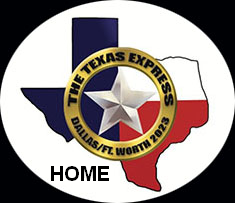John H. Gardiner IV (G4) is a Molecular Astro Biology graduate student at Penn State University. G4 is obsessed with travel having seen every county in Pennsylvania by motorcycle. He has cycled on his bicycle as much as 100 miles in a single day. He loves Amtrak too and has ridden several thousand miles on those trains. G4 models in the On30 scale. His layout railroad is the Altoona and Beach Creek Railroad in the era of the 1890s. G4 continues his very active with his Podcast, Beginners Guide to Model Railroading. G4 has significant interest in modern transit systems and his clinics focus on the various aspects of this interest.
CLINIC 1 of 3 - Modeling Modern Transit Systems
This presentation is not just for people who like trolleys! Modern transit systems – Light Rail, Streetcars, and Diesel Multiple Units – are a pervasive aspect of the modern cityscape which can be easily integrated into normally freight-centric layouts. However, despite 60 systems having been built in North America in the past 40 years, many immediately adjacent to freight railroads, they are rarely modeled.
This clinic provides an overview of modern transit: how modern transit evolved from historic streetcars and interurbans, what makes them different from their predecessors, the infrastructural and operational characteristics of each mode, and, most importantly, how modern transit systems relate to and can be modeled alongside regular mainline or shortline freight railroads.
This clinic is Part 1 of the Modern Modeling Anthology, a series of standalone clinics which can be viewed in any order, and which describes oft-unnoticed developments in railroading and rail transit from the past few decades that directly relate to traditional modeling subjects. All three are extremely visual, fast-paced, nation-wide in scope, and guaranteed to be of interest to modelers of nearly any layout size or prototype, or with a passing interest in urban design, local politics, and cities beautiful
CLINIC 2 of 3 - Passenger Service is Prototypical on Small Switching Layouts
Small, freight-oriented switching layouts are an extremely popular modeling subject. But few are aware of a dozen fully-prototypical examples of freight switching lines hosting frequent passenger service. Further still, recent DCC-Sound product offerings now make it possible to realistically model these prototypes.
This clinic describes Diesel Multiple Unit transit systems, alternatively called Hybrid Light Rail, an infrastructure-light mode of frequent passenger service that shares the same rails as freight trains. It analyzes all existing examples of DMUs and demonstrates their general characteristics, station design, and operating patterns with two prototypical track plans for a 12’x13’ spare room. Much like their real-world counterparts, model DMUs can be added to existing layouts of any size with minimal modifications, and, whereas passenger trains throw a wrench into the plans of dispatchers, the high frequency of DMUs lobs toolboxes.
This clinic is Part 2 of the Modern Modeling Anthology, a series of standalone clinics which can be viewed in any order, and which describes oft-unnoticed developments in railroading and rail transit from the past few decades that directly relate to traditional modeling subjects. All three are extremely visual, fast-paced, nation-wide in scope, and guaranteed to be of interest to modelers of nearly any layout size or prototype, or with a passing interest in urban design, local politics, and cities beautiful.
CLINIC 3 of 3 - Proto-Freelancing in the Wrong Direction (My Accidental Quest to Model the Near Future)
This clinic is exactly what it sounds like: a recounting of the slippery slope of small, seemingly logical decisions which marooned me on the wrong end of the calendar. A peculiar combination of vociferous Amtrak tripping, university club involvement, and political activism slowly percolated a discovery in the field of microferroequinology, and, like any good scientist, I must share my findings far and wide.
Less a how-to clinic and more a stand-up routine, this presentation covers the aesthetic appeal of well-branded married trainsets, the growth of high-frequency short-haul passenger corridors, and how the tumultuous history of state-supported Amtrak routes allows for ample proto-freelancing opportunities. Strap in for the tale of a long, slow cognitive decline to the revelation that it is now possible to prototypically model the future.
This clinic is Part 3 of the Modern Modeling Anthology, a series of standalone clinics which can be viewed in any order, and which describes oft-unnoticed developments in railroading and rail transit from the past few decades that directly relate to traditional modeling subjects. All three are extremely visual, fast-paced, nation-wide in scope, and guaranteed to be of interest to modelers of nearly any layout size or prototype, or with a passing interest in urban design, local politics, and cities beautiful.
|
|




